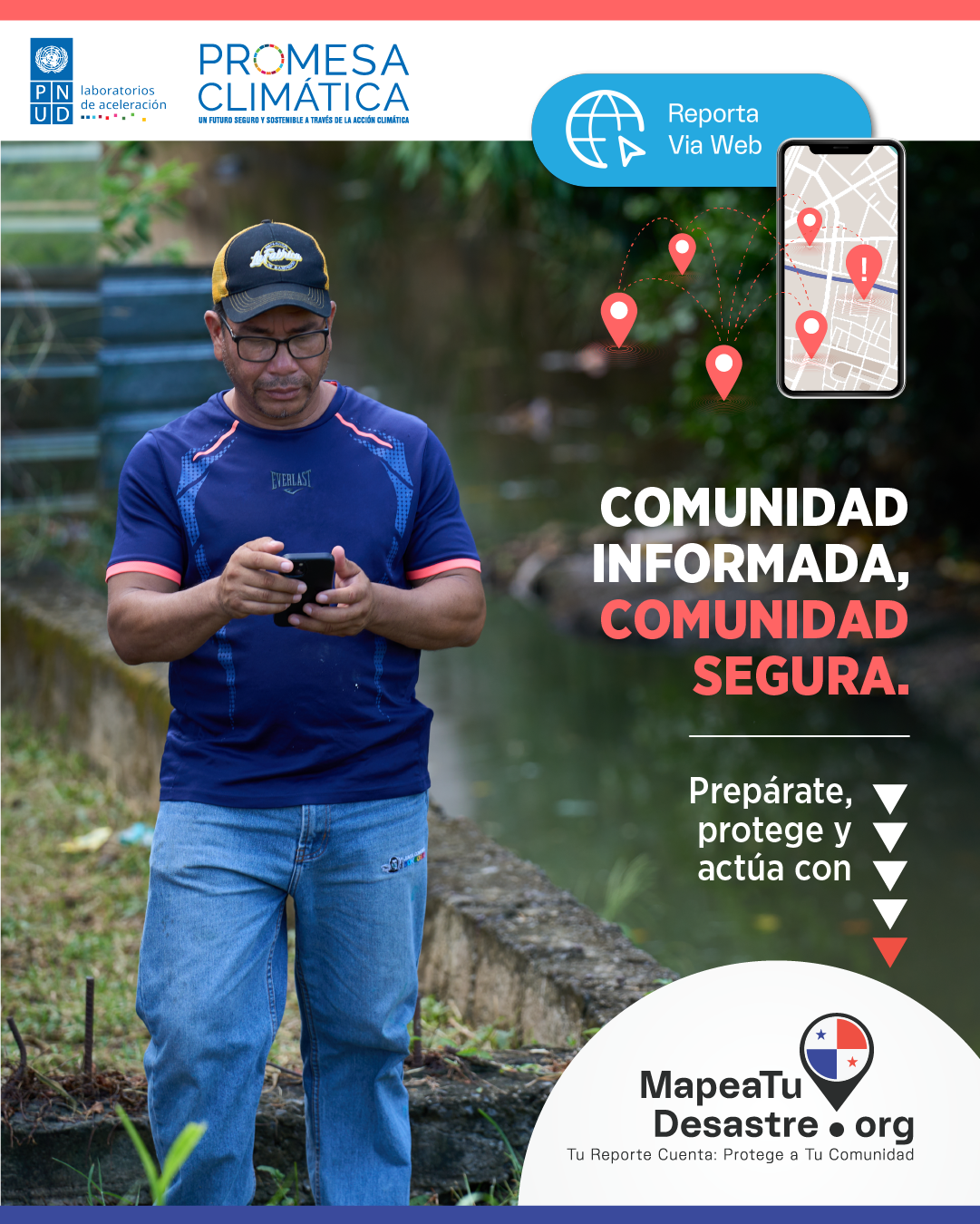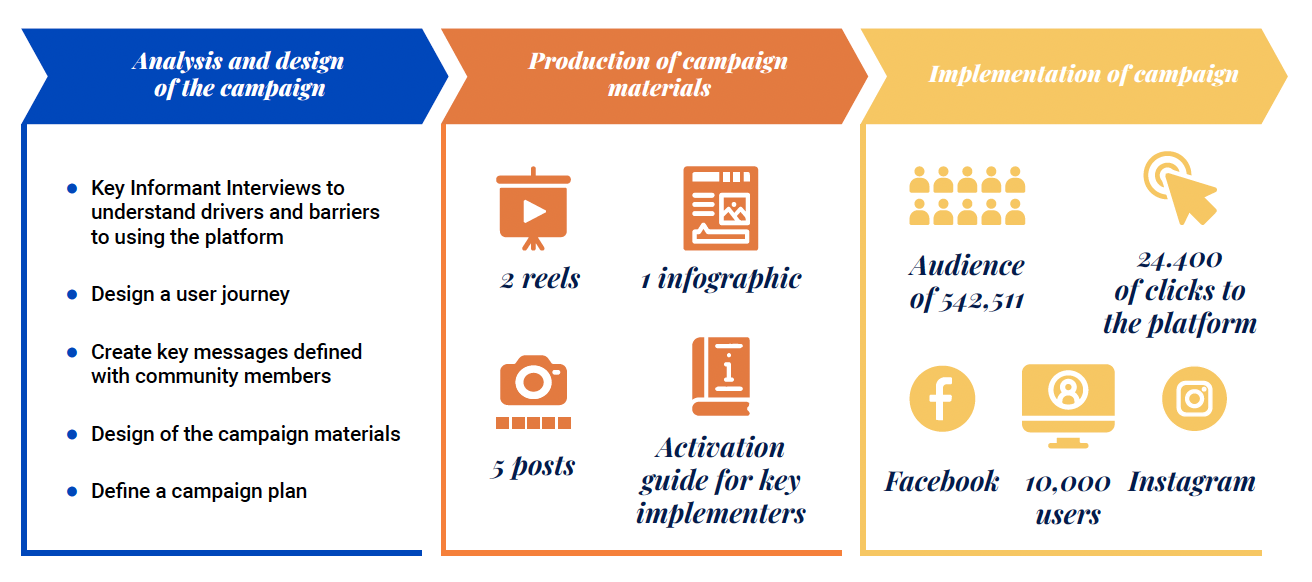
Empowering Climate Resilience: A Behavioural Science Strategy to Boost Community Engagement in Preventing Environmental Disasters
Client: UNDP Panamá
Pillar: Climate and Environment, Gender and Social Inclusion
Thematic Area: Climate Change
Services Provided: Campaign co-design and management, content design and production, creative development
The Challenge
According to data from UNDRR (2022), 73% of disasters in the Province of Panama from 1933 to 2020 were linked to floods, particularly in its metropolitan area. The UNDP Panamá Accelerator Lab developed a citizen reporting platform called MapeaTuDesastre (Map Your Disaster) for flood adaptation, specifically targeting the communities of Juan Díaz and Don Bosco. This platform leverages community intelligence to collect flood-related data and provide timely warnings to residents.
With MapeaTuDesastre, citizens can report flooding and share the reports with members of their community. By alerting others, citizens can help prevent disasters.
The Objectives
As part of the launch and positioning of MapeaTuDesastre, MAGENTA co-designed and implemented a digital Social and Behavioural Change Communication campaign.
The overall objective was to encourage community member in Juan Díaz and Don Bosco, Panama, to utilise MapeaTuDesastre to make timely decisions and stay informed in response to potential flooding.
What We Did
MAGENTA designed and implemented a pilot digital Social and Behavioural Change Communication campaign across one month to achieve three target behaviours. These behaviours were:
Community members use MapeaTuDesastre to report incidents.
Community members access MapeaTuDesastre and use citizen reports to stay informed and make timely decisions.
Community members share the platform to encourage others to report or stay informed through the report map.
The key messages of the campaign were identified and defined through a research process involving community members.
Main Findings
As MapeaTuDesastre is a reporting and consultation platform on floods, the occurrence of flood risk is necessary for the target behaviours to manifest. Throughout the campaign implementation month, only one day experienced a flood risk, preventing the establishment of a real connection between the campaign and the platform’s usage. Consequently, a longer-term campaign implemented across different weather seasons could offer more accurate insights into the behavioural changes resulting from the campaign
Introducing a sub-campaign with activities that encourage individuals to post regardless of the weather serves to familiarise users with the platform. This pre-engagement becomes particularly advantageous when actual rainfall occurs, as users will already have the necessary knowledge to actively participate
The campaign materials that garnered higher engagement were those that emphasised a sense of community responsibility. This suggests that, for campaigns of this nature, the primary driver for behavioural change is the desire to protect loved ones.
Recommendations
Some audiences used the posts to express anger against the government for not fixing hazards that resulted in floods, therefore, it is advisable to maintain the non-governmental nature of the platform. However, this may pose a challenge to long-term sustainability.
Reels have proven to be highly effective, boasting a 70% greater audience reach than regular posts. This underscores their efficacy as a powerful tool for conveying the message.
The initial target audience was limited to two communities, but people from outside showed interest by commenting or liking posts. Adjusting a bigger audience segmentation is advised for future campaigns.
An activation activity was executed in one day of the campaign to motivate citizens to use the platform even in the absence of rainfall. Implementing such initiatives is recommended to sustain ongoing engagement with the platform.


